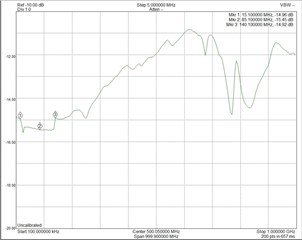Other Parts Discussed in Thread: DEM-OTA-SO-1A, TINA-TI
Hello,
I've expected to use operational transconductance amplifier (OTCA) OPA860 in my design as a wideband voltage to current converter (from a standard 50 Ohm equipment, and with output capacitance of 2+2=4 pF), and I've set it in a following schematic


I did it as close as possible to typical application schematic in its data sheet (Figure 46, page 15):

.
As it may be seen on the image from the device data sheet above, in order to make I_Q of OTCA to be about 11.2 mA, resistor Radj should be about 250 Ohm.
When I used 249 Ohm there I got V_Radj=37 mV --> I_Radj=148 uA --> I_Q=5.5 mA, which is below expected minimum of 7.9 mA, and I didn't found any signal current at the output.
I have had to decrease the Radj to 71 Ohm in order to start to see a weak signal current at the output. And in this condition the I_Q was still 6.77 mA, which is below the minimum value.
What is wrong with my circuit?
Thank you



